Article In Press : Article / Volume 3, Issue 2
- Research Article | DOI:
- https://doi.org/10.58489/2836-5933/013
Population assessment of greater amberjack Seriola dumerili along the Syrian waters in the eastern Mediterranean Sea using expert systems
1Department of Animal Production, Faculty of Agriculture Engineering, Tishreen University, Latakia, Syriaâ.
Nader Iskandar Hamwi1
Nader Iskandar Hamwi, Nour Ali-Basha, Hamam Altajer, Jullanar Salem, (2024). Population assessment of greater amberjack Seriola dumerili along the Syrian waters in the eastern Mediterranean Sea using expert systems. Journal of Marine Science and Research. 3(2); DOI: 10.58489/2836-5933/013
© 2024 Nader Iskandar Hamwi, this is an open-access article distributed under the Creative Commons Attribution License, which permits unrestricted use, distribution, and reproduction in any medium, provided the original work is properly cited.
- Received Date: 14-08-2024
- Accepted Date: 17-08-2024
- Published Date: 31-08-2024
Age, growth, Expert system, Seriola dumerili, vulnerability.
Abstract
Over a period of six months spanning from September 2023 to March 2024, researchers collected a total of 224 random samples of Seriola dumerili from the Syrian waters in the eastern Mediterranean Sea. These samples were subjected to advanced analysis techniques, including artificial neural networks and fuzzy logic. The largest individual captured during the study measured 165 cm in total length and was estimated to be 15 years old. By applying the von Bertalanffy growth equation to the total length data, researchers derived the formula TLt = 182.5 (1-e-0.09 (t + 1.887)), which indicates negative allometric growth (b = 2.70). The growth performance index (Φ') was calculated as 3.48, providing a measure of growth efficiency. The study also estimated various mortality coefficients for S. dumerili. The coefficients were as follows: Z = 0.54 y-1 (total mortality rate), F = 0.34 y-1 (fishing mortality rate), M = 0.20 y-1 (natural mortality rate), and E = 0.63 y-1 (exploitation rate). The survival coefficient (S) was determined to be 0.58 y-1. Analysis of the population growth of S. dumerili from the Syrian coast, with a fishing pressure (FP) value of 60, indicated a substantial growth pattern within the local marine environment. However, the study also revealed a high fishing vulnerability, with a vulnerability value of 72.7 FV. This vulnerability poses a significant threat to the fish population along the Syrian waters.
The findings of this study provide valuable insights into the population dynamics of S. dumerili in the Syrian watersâ region. They underscore the importance of implementing conservation measures for the sustainable management of this species. Additionally, the results enhance our understanding of S. dumerili 's growth, mortality, and vulnerability to fishing, paving the way for future research and management strategies.
Introduction
The greater amberjack Seriola dumerili is a predatory fish that belongs to the Carangidae family, which includes jacks and pompanos (Wikipedia, 2024). It has a widespread distribution, inhabiting tropical and warm temperate seas around the world (Froese & Pauly, 2024). This species can be found in both epibenthic and pelagic environments, often near reefs, deep offshore holes, or drop-offs, where it forms small to moderate-sized schools, although solitary individuals are also observed. It is also known to frequent rocky outcrops and shipwrecks. Juvenile greater amberjacks commonly associate with Sargassum or floating debris in oceanic and offshore neritic waters. Smaller individuals, weighing less than 3 kg, are often found in shallow waters (<10>S. dumerili is classified as Least Concern (LC) (Smith-Vaniz, 2015; IUCN, 2024).
Determining the age of fish using traditional methods poses challenges and requires skilled individuals to meticulously examine annual growth rings. However, recent research has shown that convolutional neural networks (CNNs) can accurately predict fish age by analyzing images of otoliths (Ordoñez et al., 2020).
In the northwest Atlantic Ocean, researchers have utilized high-resolution X-ray computed tomography to analyze vertebral centra and estimate fish age. Multiple growth models have also been employed to study growth patterns (Parsons et al., 2018).
The maturity and age of Epinephelus aeneus, Thunnus thynnus, Gymnura Altavela and Siganusluridus have been successfully predicted using a Multilayer Perceptron artificial neural network model with a configuration of (1, 10, 2) (Hamwi, 2024a; 2024b; 2024c; Hamwi & Ali-Basha, 2024; Hamwi et al., 2024).
Several studies have employed modern methodologies, such as expert systems, to assess various aspects of fish vulnerability and conservation risks. These include:
- The use of a fuzzy logic expert system to estimate the intrinsic vulnerability of marine fish to extinction caused by fishing (Cheung et al., 2005).
- Utilizing an expert system to evaluate the vulnerability and conservation risks of marine species resulting from fishing activities (Cheung 2007).
- Applying fuzzy logic to determine the vulnerability of marine species to climate change (Jones & Cheung, 2017).
- Estimating the vulnerability of specific Sparidae fish species in the eastern Mediterranean Sea (Syrian coast) using the fuzzy logic approach (Hamwi & Ali Basha, 2019).
Additionally, a model has been proposed to estimate the growth of fishery populations using an expert system based on fuzzy logic (Hamwi et al., 2022).
The Syrian coast lacks any biological research on the S. dumerili fish species. This study stands as a pioneering endeavor, examining the growth patterns and susceptibility to fishing activities of this specific Carangidae species. Advanced methodologies like artificial neural networks and fuzzy logic are employed in an expert system framework to carry out this research.
Materials and Methods
During the period from September 2023 to March 2024, a thorough collection of 224 specimens of Seriola dumerili, also known as the Greater Amberjack, was achieved along the Syrian coastline. Various fishing techniques, including pelagic and bottom trawls, as well as hook and line methods, were employed to obtain these specimens (Figure 1).
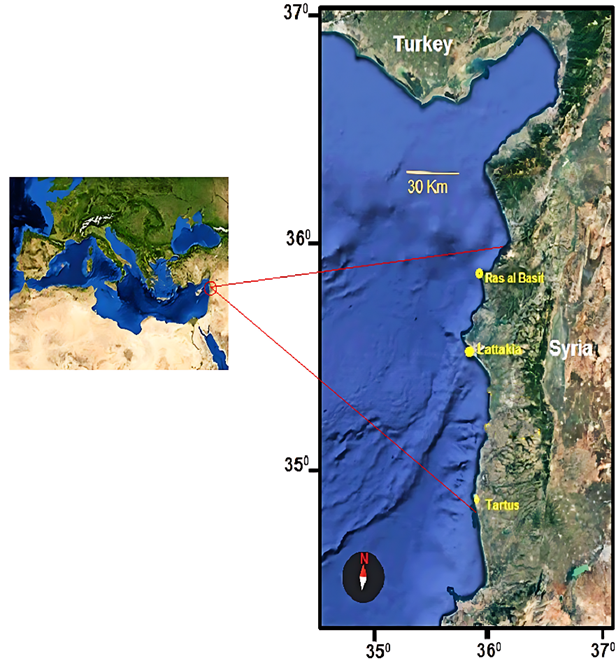
Fig 1: Syrian coast (Eastern Mediterranean Sea).
Age and Maturity
In the research conducted by Hamwi (2024a; 2024b; 2024c), a Multilayer Perceptron artificial neural network model with a configuration of (1, 10, 2) was utilized to estimate the maturity and age of S. dumerili. The model employed the total length of the fish as the input parameter for the updated network model. (Figure 2).
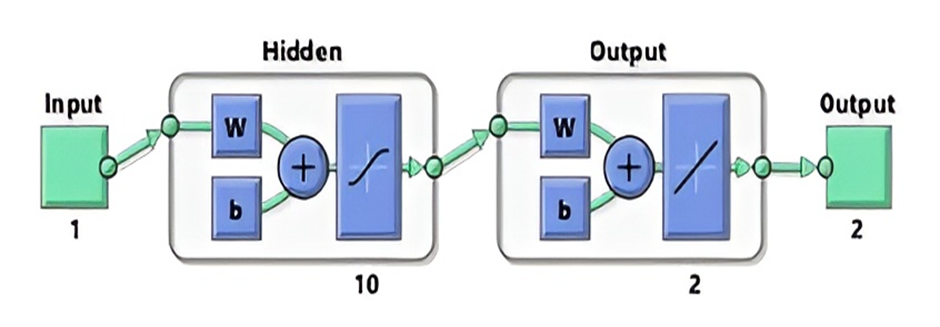
Fig 2: Artificial neural network, multilayer perceptron (MLP).
Growth of fishery population (FP):
In their study, Hamwi et al. (2022) developed an expert system model based on fuzzy logic to estimate the growth of the S. dumerili population along the Syrian coast. The model employed specific parameters (K, Tr, M, E) as inputs and utilized fuzzy logic techniques to analyze and interpret the data (Figure 3). The von Bertalanffy equation was used to determine the parameters (K, TL∞), and the selection of the appropriate growth model was guided by the Akaike Information Criterion (AIC) [AIC = N ln (WSS) + 2M]. Here, N represents the number of data points, WSS is the weighted sum of squares of residuals, and M denotes the number of model parameters. The objective of the study was to compare different growth models that describe the characteristics of the fish species (Hamwi, 2018):
TLt = TL∞ / [1 + e-K(t-t0)]
TLt refers to the total length of the fish at a specific age (t), while TL∞ represents the hypothetical asymptotic total length (cm) that the fish can potentially reach. The growth coefficient is denoted by K, and t0 represents the theoretical age at which the length of the fish is assumed to be zero.
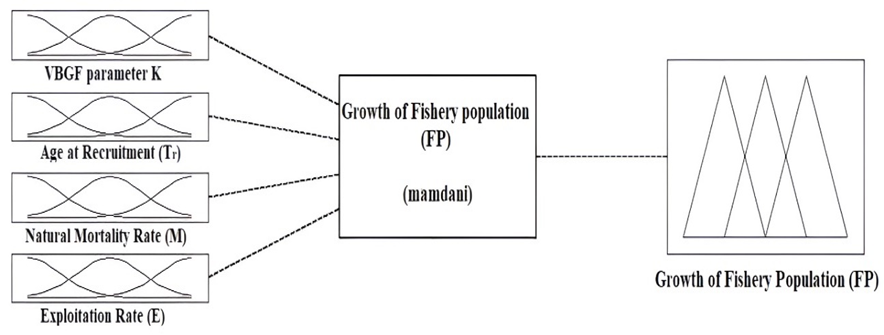
Fig 3: Fuzzy inference system variables (Inputs: K, Tr, M, E; Output: FP).
To estimate the total mortality rate (Z), the Ricker method (1975) was utilized. This method involved calculating the regression equation for the catch curve (ln Nt = a - Zt) throughout the entire population.
The natural mortality rate (M) was determined by employing a specific relationship:
Log M = -0.0066 -0.279 log TL∞ + 0.6543 log K + 0.4634 log T (Pauly, 1980)
The von Bertalanffy parameters TL∞ and K were used, along with the average surface water temperature (T) in the fishing area. Throughout the study period, the average surface water temperature was recorded as 22.9 °C.
The fishing mortality rate (F) was determined by calculating the difference between the total mortality rate (Z) and the natural mortality rate (M) (Ricker, 1975). Thus, F = Z - M.
The exploitation rate (E) was computed using the formula E = F / Z (Sparre & Venema, 1998).
The survival rate (S) was determined by the equation S = e-Z (Ricker, 1975).
The calculation of the total length (TLc) and age (Tc) at first capture involved the application of equations proposed by Beverton and Holt (1957):
TLc = TL' - [ K (TL∞ - TL') / Z]
Tc = - (1/K) * ln (1 - TLc / TL∞) + t0
TL' refers to the average total length of the captured fish.
The total length (TLr) and age (Tr) at recruitment were determined using the equations proposed by Beverton and Holt (1957):
TLr = TL' - [ K (TL∞ - TL0) / Z]
Tr = - (1/K) * ln (1- TLr / TL∞) + t0
TL0 represents the total length of the fish at the moment of hatching or age zero.
The growth performance index (ΦTL`) can be calculated using the equation proposed by Pauly and Munro (1984): ΦTL` = logK + 2logTL∞
The relative yield-per-recruit (Y'/R) model, as presented below, is derived from the Beverton and Holt model (1966):
Y'/R = [ E * U(M/K)] * [ 1 – (3U / (1 + m) + (3U2 / (1 + 2m) – (U3 / (1 + 3m)]
Where: U = 1-(Lc/L∞); m = (1-E) / (M/K) = (K/Z); E = F/Z.
The estimation of relative biomass-per-recruit (B'/R) is derived from the following relationship (Ricker, 1975): B'/R = (Y'/R) / F.
Fishing Vulnerability (FV):
To evaluate the susceptibility of S. dumerili to fishing, the model developed by Hamwi and Ali-Basha (2019) was utilized. This expert system utilized specific parameters (TLmax, K, Tmax, M, S) as inputs and employed fuzzy logic techniques to analyze and assess the fishing vulnerability of the species. (Figure 4).
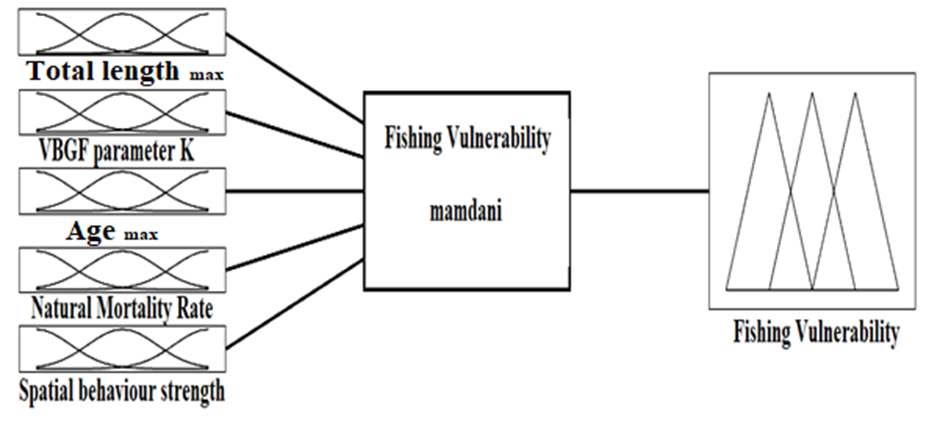
Fig 4: Fuzzy inference system variables (Inputs: TLmax, K, Tmax, M, S; Output: FV).
Results and Discussion
The analysis of the age composition of Seriola dumerili revealed the presence of 15 distinct age groups. Among these, the first age group was the most dominant, accounting for 17.41% of the total population. In contrast, the fifteenth age group represented only 0.45% of the overall catch, indicating a long lifespan for this species along the Syrian coast (Figure 5).
Examining the relative frequency of individuals in different total length (TL) categories, it was observed that individuals with total lengths ranging from 60.1-70 cm, 80.1-90 cm, and 90.1-100 cm were the most prevalent, accounting for 16.96%, 16.52%, and 16.52%, respectively. On the other hand, individuals with total lengths of 150.1-160 cm were the least represented, comprising only 0.89% of the population.
Within the scope of this study, S. dumerili individuals from the Syrian coast exhibited a maximum total length of 165 cm at the age of 15+. Conversely, the smallest recorded total length for an individual was 25.4 cm at the age of 1+. In the southeastern Adriatic Sea, the recorded total lengths ranged from 32 cm to 160 cm, with the most frequent length being 40-41.9 cm, and at the age of 1+, the maximum recorded total length reached 160 cm (Kožul et al., 2021). In the southeastern United States, the maximum observed total length was 155.2 cm at the age of 17 (Manooch & Potts, 1997) (Table 1).
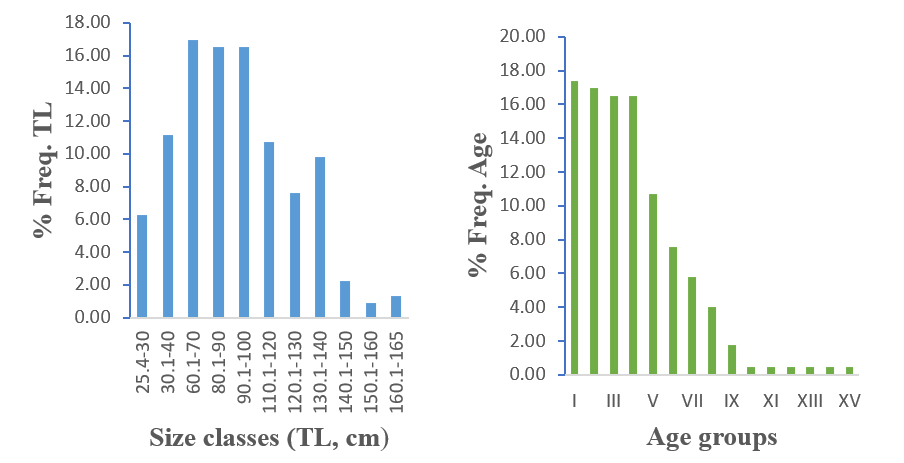
Fig 5: A. Total length frequency distribution (TL); B. Age composition for Seriola dumerili in Syrian waters.
Table 1: Maximum-minimum total length and age of Seriola dumerili from different water bodies.
| Location and author | Age | Total Length (TL, cm) | |||
Min | Max | ||||
| southeastern Adriatic Sea (Kožul et al., 2021) | 10 | 32 | 160 | ||
| Syrian coast (present study) | 15 | 25.4 | 165 | ||
| southeastern United States (Manooch & Potts, 1997) | 17 | 50.1 | 155.2 | ||
The parameters in the von Bertalanffy growth equation for total length were determined through the following calculations: TLt = 182.50 (1-e-0.09 (t + 1.887)) (AIC= 360.662; WSS= 1047.49; 95% confidence= 1.61). According to Kožul et al. (2021), the hypothetical asymptotic total length growth of S. dumerili in the southeastern Adriatic Sea was reported to be 174.6 cm. Manooch and Potts (Manooch & Potts, 1997) found that in the southeastern United States, the hypothetical asymptotic total length growth of S. dumerili was 164.8 cm. In the present study, the hypothetical asymptotic total length growth of S. dumerili was determined to be 182.50 cm.
The growth rate of total length in S. dumerili was assessed by examining the growth coefficient (k) derived from the von Bertalanffy equation. The calculated value for total length growth was determined to be 0.09. It is worth noting that this value is lower compared to the corresponding values observed in the southeastern Adriatic Sea (k = 0.190) and the southeastern United States (k = 0.119). The findings of this study revealed a negative allometric growth pattern (b = 2.70) for total length, indicating a more rapid increase in total length relative to other dimensions. Notably, this negative allometric growth pattern (b = 2.847) was specifically observed in the southeastern Adriatic Sea and the southeastern United States (b = 2.70).
Based on the findings of this study, the average age and total length of S. dumerili individuals at first capture were determined to be 6.54 years and 97.01 cm, respectively. Similarly, the average age and total length of individuals at recruitment were found to be 4.91 years and 83.55 cm, respectively. The ratio of the length at first capture to the asymptotic length (Lc/L∞) serves as an indicator of whether the harvested fish are predominantly juveniles or mature individuals. If the (Lc/L∞) ratio is less than 0.5, it suggests that the majority of the catch consists of juvenile fish species (Pauly & Soriano, 1986). In this study, the estimated (Lc/L∞) ratio was 0.53, which is close to 0.5. This indicates that the majority of the catch in the S. dumerili fishery mainly comprises adult fish.
Furthermore, the growth performance index (Φ') for total length growth was calculated and recorded as 3.48.
Within the scope of this study, the total mortality coefficient (Z) of S. dumerili was estimated to be 0.54 per year. The fishing mortality coefficient (F) and natural mortality (M) were calculated as 0.34 per year and 0.20 per year, respectively, while the survival rate (S) was determined to be 0.58 per year. Additionally, the exploitation mortality coefficient (E) was found to be 0.63 per year.
The results presented in Figure 6 depict the relationship between exploitation rates (E) and the relative yield per recruit (Y'/R) as well as the relative biomass per recruit (B'/R). The exploitation rates considered in this analysis ranged from 0.05 to 1.00, serving as a variable input parameter. By examining the first derivative of the yield function with respect to the exploitation rate, several significant values were estimated. These values include Emax, which represents the exploitation rate that leads to the maximum yield per recruit. In the case of S. dumerili, the calculated value of Emax was found to be 0.889 y-1. Additionally, two other crucial values were determined. E0.1 corresponds to the exploitation rate at which the marginal increase in relative yield-per-recruit reaches one-tenth of its value at E = 0. For S. dumerili, the calculated value of E0.1 was 0.761 y-1. Moreover, E0.5 represents the exploitation rate at which the stock's biomass has been reduced to 50% of its unexploited state. The estimated value of E0.5 for S. dumerili was found to be 0.378 y-1. These findings contribute to our understanding of the relationship between exploitation rates and the relative yield and biomass per recruit for S. dumerili. They provide valuable insights into the population dynamics of this species and offer guidance for sustainable management practices.
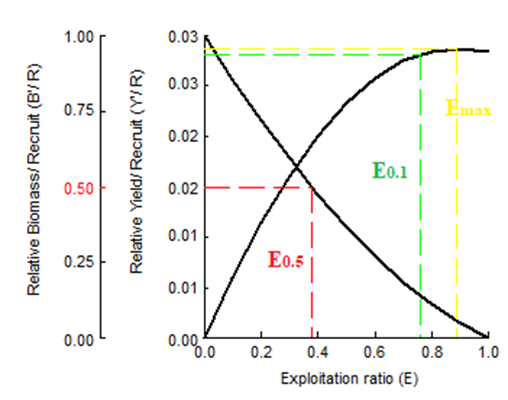
Fig 6: Relative yield per recruit (Y`/R) and biomass per recruit (B`/R) (Knife-edge selection) of Seriola dumerili collected from Syrian coast.
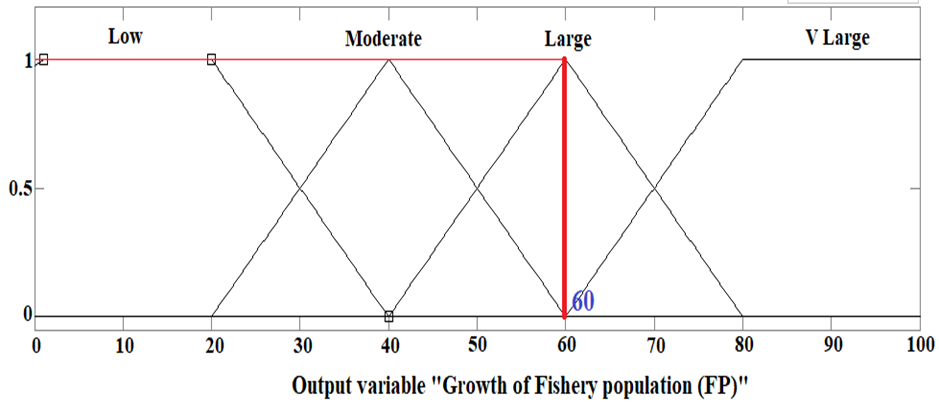
Fig 7: The growth of Seriola dumerili population off the Syrian coast.
Greater Amberjack, as a general trend, face pressures resulting from fishing activities and the depletion of their populations. Consequently, their life cycle can be divided into two distinct stages: the unexploited phase, which spans from hatching to the age at first capture (tc), and the exploited phase, which extends from tc onwards (Beverton & Holt, 1956). In the present study, it was discovered that the exploitation of S. dumerili surpassed the allowable limit or the optimal exploitation rate (E0.5 = 0.328) (Gulland, 1971). The heightened mortality rate observed was attributed to the pressure exerted by fishing operations. An exploitation rate surpassing 0.5 indicates an unsustainable fish population, signaling overfishing and a decline in the stock's biomass (Patterson, 1992).
The expert system based on fuzzy logic, proposed by Hamwi et al. (2022), generated a growth value of 60 for the S. dumerili population along the Syrian coast. This value corresponds to a large growth rate of 1, based on a maximum fishery population growth (FP) value of 100 (Figure 7), indicating a clear inclination towards large growth within the Syrian coastal environment.
According to the expert system (fuzzy logic) developed by Hamwi and Ali Basha (Hamwi & Ali Basha, 2019), S. dumerili demonstrated a fishing vulnerability of 72.7 FV, with the maximum vulnerability value (FV) being 100. This value indicates a very high vulnerability of 0.70 and a high vulnerability of 0.30 (Figure 8), suggesting a strong inclination towards being highly vulnerable to fishing activities. As a result, these fish face a significant threat along the Syrian coast. On the other hand, Fishbase's intrinsic vulnerability assessment classifies S. dumerili as having a moderate vulnerability, with a rating of 54 out of 100 (Froese & Pauly, 2024).
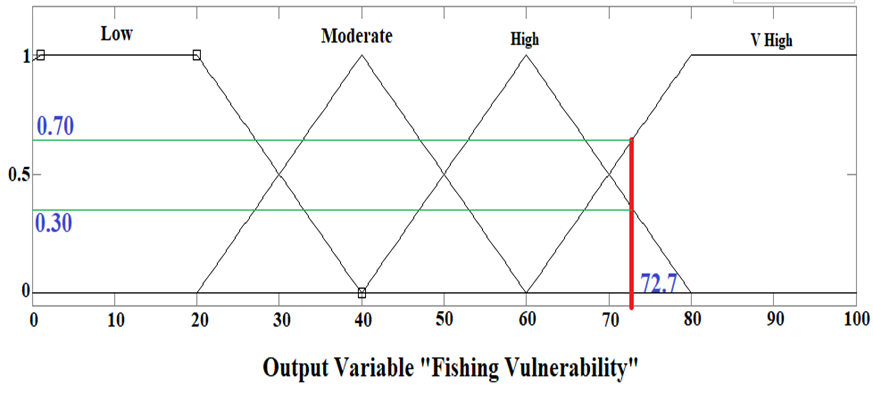
Fig 8: The vulnerability of Seriola dumerilito fishing off the Syrian coast.
Conclusions
The present study offers significant insights into the population dynamics of Seriola dumerili along the Syrian coast, underscoring the significance of conservation measures in ensuring the sustainable management of this species. The findings contribute to our comprehension of S. dumerili's growth patterns, mortality rates, and vulnerability to fishing, thereby establishing a foundation for future research and management strategies.
The outcomes of this study carry substantial implications for the management of the S. dumerili fishery along the Syrian coast. Overfishing can profoundly affect the population's ability to sustain itself, resulting in decreased abundance. Hence, the implementation of management strategies that minimize the catch of S. dumerili and ensure the long-term sustainability of the fishery is of utmost importance.
References
- Beverton, R. J. H. & Holt, S.J. (1956). A review of methods for estimating mortality rates in fish populations, with special references to sources of bias in catch sampling. Rapp Proces-verb Reun Cons Int Explor Mer, 140, 67-83.
- Beverton, R. J., & Holt, S. J. (1957). On the dynamics of exploited fish populations. Fishery Investigations, Series II (London), 19: 1- 533.
- Beverton, R. J., & Holt, S. J. (1966). Manual of methods for fish stock assessment. Pt. 2: Tables of yield functions (Vol. 1, No. 38).
- Cheung, W. L. (2007). Vulnerability of marine fishes to fishing: from global overview to the Northern South China Sea (Doctoral dissertation, University of British Columbia).
- Cheung, W. W., Pitcher, T. J., & Pauly, D. (2005). A fuzzy logic expert system to estimate intrinsic extinction vulnerabilities of marine fishes to fishing. Biological conservation, 124(1), 97-111.
- Froese, R. & Pauly, D. (2024). FishBase. world wide web electronic publication
- Garcia-Gomez, A. (2000). Recent advances in nutritional aspects of Seriola dumerili. Cahiers Options Mediterraneennes, 47, 249-257.
- Gulland, J. A. (1971). The fish resources of the ocean. West Byfleet, Surrey. Fishing News (Books), Ltd., for FAO, 255.
- Hamwi, N., & Ali Basha, N. (2019). Estimation of the vulnerability of some Sparidae species to fishing in the Eastern Mediterranean Sea (Syrian coast) by fuzzy logic method. Journal of Al-Baath University, 41(10), 129-160.
- Hamwi, N. & Ali-Basha, N. (2024) Growth of Spiny Butterfly Ray Gymnura altavela Population and Vulnerability to Fishing along the Syrian Coast (Eastern Mediterranean Sea). International Journal of Oceanography & Aquaculture, 8(3).
- 11. Hamwi, N. (2018). Use Akaike (AIC) and Schwartz (SC) information criterions in the differentiation between nonlinear growth models of different fish species. Journal of Al-Baath University, 40(3), 45-66.
- 12. Hamwi, N. (2024a). Predicting age and maturity of endangered Spiny butterfly ray, Gymnura altavela (Linnaues 1758) using artificial neural network (multilayer perceptron). Damascus University Journal for the basic sciences, Vol. 40, No. 1.
- 13. Hamwi, N. I. (2024b). Population Growth of Thunnus thynnus and Vulnerability to Fishing along the Syrian Coast (Eastern Mediterranean Sea). International Journal of Oceanography & Aquaculture, 8(2).
- 14. Hamwi, N. I. (2024c). Population Assessment of White Grouper Epinephelus aeneus Using Specialist Technical Methods Along Coastal Syrian Waters in The Eastern Mediterranean. Journal of Marine Science and Research, 3(1).
- Hamwi, N., Ali-Basha, N., Al-Tajer, H., & Farah, T. (2022). A proposed model to estimate the growth of the fishery populations by expert system. 5(9), 92-106.
- Hamwi, N., Ali-Basha, N., Altajer, H. & Salem, J. (2024) Assessment of Dusky Spinefoot Siganus luridus Population Dynamics along the Syrian Coast (Eastern Mediterranean Sea) Utilizing Different Expert System Techniques. International Journal of Oceanography & Aquaculture, 8(3).
- IUCN (2024). The IUCN Red List of Threatened Species. Version 2023-1.
- Jones, M. C., & Cheung, W. W. (2017). Using fuzzy logic to determine the vulnerability of marine species to climate change. Global change biology, 24(2), e719-e731.
- Kožul, Skaramuca, Kraljević, Dulčić, & Glamuzina. (2001). Age, growth and mortality of the Mediterranean amberjack Seriola dumerili (Risso 1810) from the south‐eastern Adriatic Sea. Journal of Applied Ichthyology, 17(3), 134-141.
- Manooch III, C. S., & Potts, J. C. (1997). Age, growth and mortality of greater amberjack from the southeastern United States. Fisheries Research, 30(3), 229-240.
- Ordoñez, A., Eikvil, L., Salberg, A. B., Harbitz, A., Murray, S. M., & Kampffmeyer, M. C. (2020). Explaining decisions of deep neural networks used for fish age prediction. PloS one, 15(6), e0235013.
- Parsons, K. T., Maisano, J., Gregg, J., Cotton, C. F., & Latour, R. J. (2018). Age and growth assessment of western North Atlantic spiny butterfly ray Gymnura altavela (L. 1758) using computed tomography of vertebral centra. Environmental biology of fishes, 101, 137-151.
- Patterson, K. (1992). Fisheries for small pelagic species: an empirical approach to management targets. Reviews in fish biology and fisheries, 2, 321-338.
- Pauly, D. (1980). A new methodology for rapidly acquiring basic information on tropical fish stocks: growth, mortality and stock-recruitment relationships. Stock assessment for tropical small-scale fisheries, 154-172.
- Pauly, D., & Munro, J. L. (1984). Once more on the comparison of growth in fish and invertebrates. Fishbyte, 2(1), 1-21.
- Pauly, D., & Soriano, M. L. (1986). Some practical extensions to Beverton and Holt’s relative yield-per-recruit model. In The first Asian fisheries forum (pp. 491-496). Manila: Asian Fisheries Society.
- Ricker, W. E. (1975). Computation and interpretation of biological statistics of fish populations. Fish. Res. Board Can. Bull., 191, 1-382.
- Sánchez-Cueto, P., Stavrakidis-Zachou, O., Clos-Garcia, M., Bosch, M., Papandroulakis, N., & Lladó, S. (2023). Mediterranean Sea heatwaves jeopardize greater amberjack’s (Seriola dumerili) aquaculture productivity through impacts on the fish microbiota. ISME communications, 3(1), 36.
- Smith-Vaniz, W.F., Pina Amargos, F., Brown, J., Curtis, M. & Williams, J.T. (2015). Seriola dumerili (errata version published in 2017). The IUCN Red List of Threatened Species 2015: e.T198643A115341394.
- Sparre, P., & Venema, S.C. (1998). Introduction to tropical fish stock assessment. Part 1: Manual. FAO Fish. Tech. Paper., 306, 1-407.
- Wikipedia contributors. (2024). Greater amberjack. In Wikipedia, The Free Encyclopedia. Retrieved 13:50, August 13, 2024.


